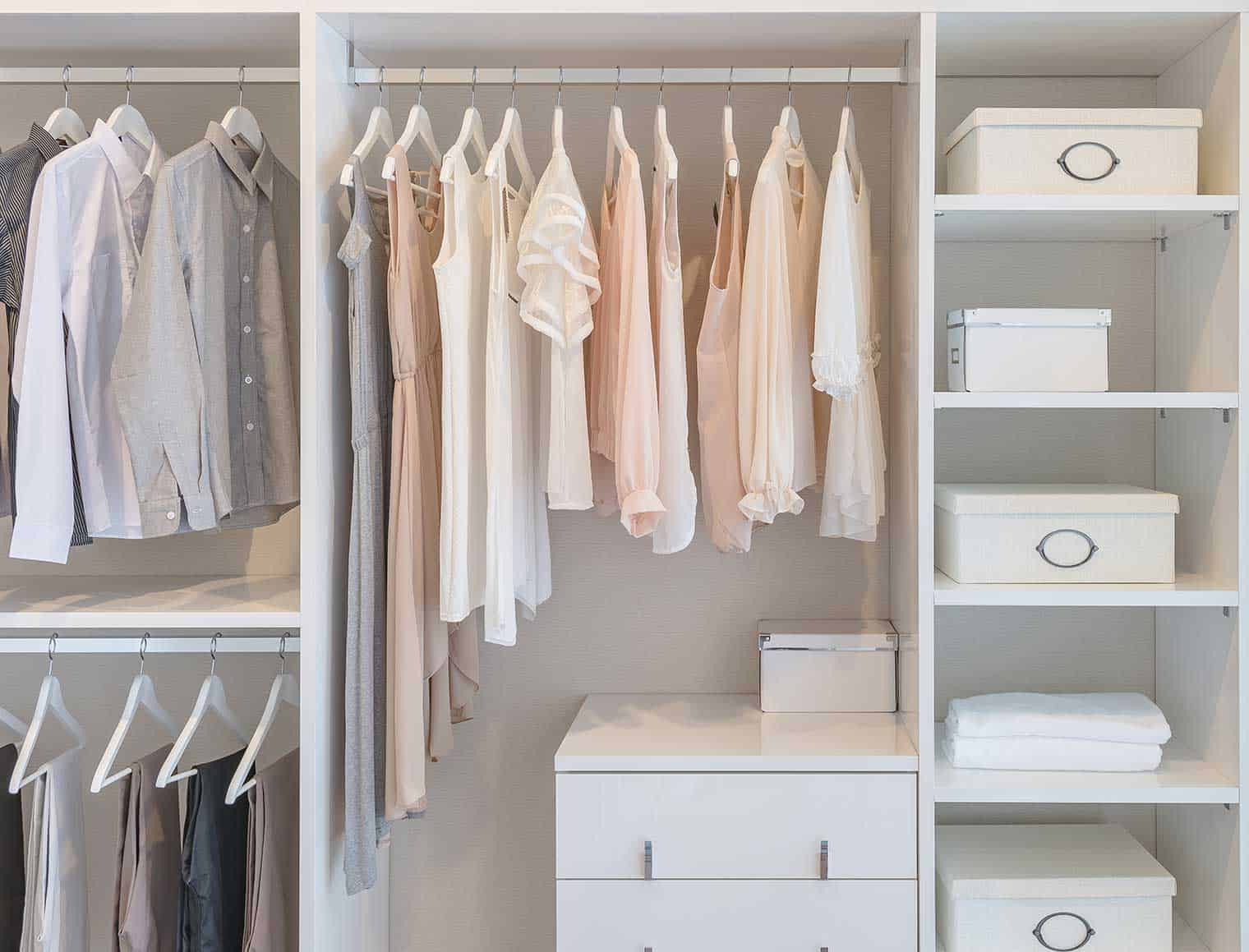Organize Your Wardrobe with Seasonal Storage Bins
Keeping your wardrobe organized can be a challenging task, especially when you have to switch out clothing for the changing seasons. As the weather shifts, so does your wardrobe. Winter coats, heavy sweaters, and scarves are no longer needed once the warmth of summer arrives, and vice versa. Seasonal storage bins provide an efficient and practical way to manage the transition, keeping your clothes organized, accessible, and protected year-round. By using these storage bins, you can free up valuable closet space, keep your clothes in pristine condition, and make the process of changing over your wardrobe smoother.
In this article, we’ll explore how to effectively organize your wardrobe with seasonal storage bins, including the benefits, types of bins to use, and best practices for storing seasonal clothing.
1. Why Seasonal Storage Bins Are Essential
Maximize Closet Space
As the seasons change, you often find yourself needing more space in your closet to accommodate the current season’s clothing. Seasonal storage bins offer a simple solution to maximize the use of available space by keeping off-season clothes neatly packed away. By clearing out bulky winter coats or summer dresses that are no longer in use, you create space for clothes that are relevant to the current weather.
Protect Clothes from Damage
Seasonal storage bins help protect your clothing from dust, dirt, pests, and moisture that could cause damage during the off-season. When clothes are stored improperly—such as in a heap at the bottom of your closet or in flimsy bags—they can become wrinkled, stained, or even develop mildew. High-quality storage bins help keep these issues at bay by providing a clean, secure environment for your clothes.
Simplify Wardrobe Swaps
Switching out clothes as the seasons change can be a daunting task without the right storage system. Seasonal storage bins make this process much easier. You can pack up your winter clothes in the spring and pull out your summer wardrobe without creating unnecessary clutter in your home. This not only helps keep your closet organized but also makes it easier to find what you need when you need it.
2. Choosing the Right Seasonal Storage Bins
Clear Plastic Bins
Clear plastic bins are one of the most popular choices for seasonal storage. The transparency of these bins allows you to easily see the contents without having to open each one. This can be particularly helpful when you’re looking for specific items like sweaters, boots, or jackets. Additionally, most clear plastic bins are stackable, allowing you to maximize vertical space in your closet or attic.
Breathable Fabric Storage Bins
Fabric storage bins are a great option if you want a softer alternative to plastic bins. They are often made from cotton, canvas, or polyester, which are breathable materials that prevent moisture buildup, ensuring your clothes stay fresh. Fabric bins are lightweight, easy to carry, and available in various sizes to suit your storage needs. They can be easily folded when not in use, making them ideal for those with limited storage space.
Vacuum-Seal Bags
For those with limited closet space or a large wardrobe, vacuum-seal bags are a fantastic solution. These bags remove the air from the packaging, compressing your clothes into a compact size. This is especially useful for bulky items like coats, comforters, and winter blankets. Vacuum-seal bags also protect your clothes from dust, dirt, and moisture, ensuring they remain in great condition until the next season.
Labeled Storage Bins
Whether you choose plastic, fabric, or vacuum-seal bags, it’s essential to label your bins. Proper labeling helps you easily identify what’s inside without needing to open every single box. You can use simple labels such as “Winter Clothes,” “Summer Dresses,” or “Spring Accessories.” If you have multiple bins for a single season, you can use more specific labels to describe the contents, like “Sweaters” or “Boots.” This can save you time when swapping out clothes at the start of the new season.
Stackable Storage Solutions
If you have limited closet space, stackable bins are a must-have. These bins allow you to store your seasonal clothing on shelves or in a closet without taking up too much space. Some storage bins are designed to be stackable, with a sturdy base and lid that lock into place. This feature is especially useful for storing multiple bins of seasonal clothing, as it ensures they stay organized and easy to access.
:max_bytes(150000):strip_icc()/Snapinsta.app_179469043_145138130907601_8590150669671287789_n_1080-H-7624d188b6af46eb85d51aa9a8ab6b70.jpg) 3. Best Practices for Storing Seasonal Clothing
3. Best Practices for Storing Seasonal Clothing
Clean Clothes Before Storing Them
Before packing away your seasonal clothes, make sure they are clean and completely dry. Storing dirty or damp clothes can lead to stains, mildew, or unpleasant odors. Check pockets for any leftover tissues, receipts, or crumbs, as these can attract pests. Washing and drying clothes thoroughly before packing them away ensures they remain fresh when you retrieve them next season.
Fold and Organize
When packing away your clothes, be sure to fold them neatly to avoid wrinkles or creases. For clothes that are prone to damage from being folded (like delicate dresses or blouses), you may want to hang them in a garment bag before storing them in a bin. For items that can be folded, take the time to organize them by type or season (e.g., fold all sweaters together and store them in one bin).
Use Cedar or Lavender for Freshness
To keep your clothes smelling fresh and free from pests, consider using cedar blocks or lavender sachets inside your seasonal storage bins. Cedar naturally repels moths and other insects, while lavender provides a pleasant fragrance. Both are great alternatives to harsh chemicals that could damage your clothing or harm the environment.
Store in a Cool, Dry Place
To preserve the quality of your clothes, store your seasonal bins in a cool, dry place away from direct sunlight. Excessive heat or humidity can cause fabrics to deteriorate, fade, or develop mildew. A closet, attic, or basement is typically a good option, but avoid areas like the garage, where temperature fluctuations and moisture can damage your clothing.
Don’t Overstuff Bins
It might be tempting to stuff as much clothing as possible into a single storage bin, but overstuffing can cause the bin to warp or break. It can also create wrinkles and put unnecessary pressure on the clothing, leading to damage. Instead, take the time to use multiple bins if needed, and be sure to close the lids securely to protect your clothes.
4. How to Rotate Your Wardrobe with Seasonal Storage Bins
Start with a Seasonal Plan
At the start of each season, take a few minutes to evaluate your wardrobe and decide what needs to be packed away. Depending on where you live, you might need to store items like winter coats and boots in the spring and summer clothing in the fall. Creating a seasonal plan will help you stay on top of the wardrobe switch, so you don’t end up with too many clothes in your closet at once.
Be Consistent with Your Storage System
To keep things running smoothly year after year, try to maintain a consistent storage system. Store similar items together (such as winter coats, scarves, and hats in one bin) and label each container clearly. This will make it easier to locate your clothes and prevent the stress of rummaging through a disorganized pile of bins.
Review and Refresh Your Wardrobe
While switching out seasonal clothing, it’s a great time to review your wardrobe and decide if any items should be donated, sold, or discarded. This will help you keep your collection manageable and make future seasonal swaps more efficient.
5. Additional Tips for Wardrobe Organization
Seasonal Closet Dividers
For items that are frequently rotated between seasons, consider using closet dividers to separate them by season. This makes it easy to grab what you need without disturbing the rest of your clothes. If you have limited space, seasonal dividers in your closet can help you maximize your hanging space.
Utilize Shelf and Hanging Storage
If you don’t have enough bins or closet space, consider using shelves or hanging organizers to store off-season clothing. Hanging garments in fabric garment bags or stacking lightweight bins on shelves can be just as effective as using storage bins.
:max_bytes(150000):strip_icc()/smart-closet-storage-ideas-2648418-step-10-c8ddb9bcbe804bfc8cc17d684513b59f.jpg) Conclusion
Conclusion
Seasonal storage bins are an essential tool for anyone looking to maximize closet space, protect their clothing, and stay organized throughout the year. By choosing the right bins, cleaning and organizing your clothes properly, and following best practices for storing them, you can make wardrobe transitions easy and stress-free. Whether you’re storing winter coats or summer dresses, these storage solutions ensure that your clothes remain in excellent condition and are ready to wear when the season changes. With the right seasonal storage system in place, your wardrobe will stay organized, functional, and free from clutter all year long.



